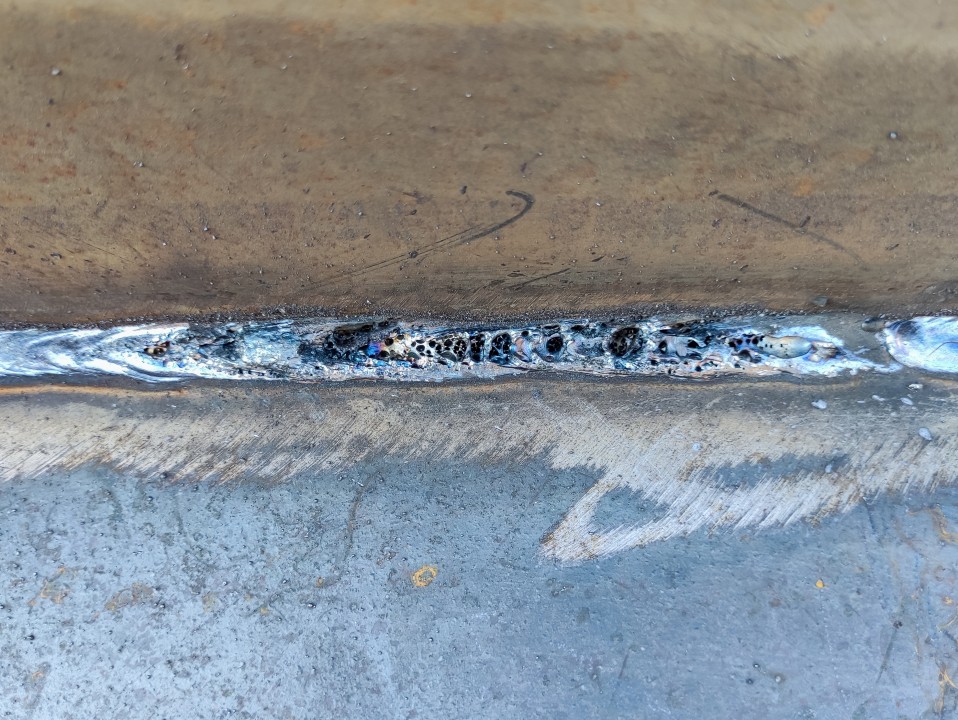The Scientific Research Behind Porosity: A Comprehensive Overview for Welders and Fabricators
Comprehending the elaborate systems behind porosity in welding is crucial for welders and producers striving for impeccable craftsmanship. As metalworkers dive into the midsts of this sensation, they discover a globe regulated by numerous elements that affect the development of these tiny voids within welds. From the composition of the base products to the details of the welding procedure itself, a wide range of variables conspire to either exacerbate or alleviate the visibility of porosity. In this detailed guide, we will certainly decipher the scientific research behind porosity, exploring its impacts on weld high quality and unveiling advanced strategies for its control. Join us on this trip through the microcosm of welding flaws, where precision meets understanding in the search of perfect welds.
Comprehending Porosity in Welding
FIRST SENTENCE:
Examination of porosity in welding reveals critical understandings into the stability and high quality of the weld joint. Porosity, defined by the existence of dental caries or spaces within the weld metal, is a common concern in welding procedures. These gaps, otherwise effectively addressed, can compromise the architectural honesty and mechanical properties of the weld, bring about potential failings in the finished item.

To detect and evaluate porosity, non-destructive screening techniques such as ultrasonic screening or X-ray examination are often employed. These techniques allow for the recognition of interior defects without endangering the stability of the weld. By analyzing the size, shape, and distribution of porosity within a weld, welders can make educated decisions to boost their welding processes and attain sounder weld joints.

Elements Influencing Porosity Formation
The occurrence of porosity in welding is affected by a myriad of variables, ranging from gas protecting performance to the complexities of welding criterion settings. Welding parameters, including voltage, present, take a trip speed, and electrode type, likewise influence porosity formation. The welding method employed, such as gas steel arc welding (GMAW) or secured metal arc welding (SMAW), can influence porosity development due to variants in warm circulation and gas insurance coverage - What is Porosity.
Effects of Porosity on Weld Quality
The visibility of porosity additionally weakens the weld's resistance to deterioration, as the caught air or gases within the spaces can react Continue with the surrounding environment, leading to destruction over time. In addition, porosity can impede the weld's ability to hold up against stress or effect, additional endangering the overall top quality and integrity of the welded framework. In important applications such as aerospace, vehicle, or architectural buildings, where safety and resilience are paramount, the destructive impacts of porosity on weld top quality can have serious consequences, highlighting the importance of minimizing porosity via appropriate welding strategies and procedures.
Strategies to Reduce Porosity
Furthermore, utilizing the suitable welding criteria, such as the right voltage, current, and take a trip speed, is important in stopping porosity. Maintaining a consistent arc length and angle throughout welding likewise assists decrease the possibility of porosity.

In addition, picking the ideal securing gas and preserving appropriate gas flow rates are necessary in lessening porosity. Using the suitable welding strategy, such as back-stepping or using a weaving movement, can likewise help disperse heat uniformly and reduce the opportunities of porosity formation. Finally, ensuring proper air flow in the welding environment to get rid of any potential resources of contamination is essential for attaining porosity-free welds. By applying these techniques, welders can properly reduce porosity and produce high-quality welded joints.

Advanced Solutions for Porosity Control
Carrying out advanced modern technologies and innovative approaches plays a pivotal function in attaining remarkable control over porosity in welding processes. In addition, employing sophisticated welding strategies such as pulsed MIG welding or modified environment welding can check additionally aid minimize porosity problems.
Another advanced solution includes the usage of innovative welding equipment. For example, utilizing tools with built-in functions like waveform control and sophisticated source of power can enhance weld quality and minimize porosity risks. The implementation of automated welding systems with accurate control over parameters can significantly reduce porosity problems.
Moreover, integrating sophisticated monitoring and inspection technologies such as real-time X-ray imaging or automated ultrasonic screening can aid in finding my site porosity early in the welding procedure, permitting for prompt restorative actions. In general, integrating these sophisticated remedies can substantially boost porosity control and improve the general quality of bonded parts.
Final Thought
In final thought, understanding the scientific research behind porosity in welding is vital for welders and fabricators to create top quality welds - What is Porosity. Advanced remedies for porosity control can better enhance the welding process and make sure a strong and trusted weld.